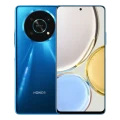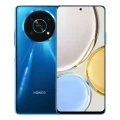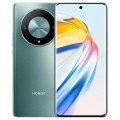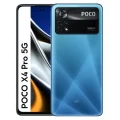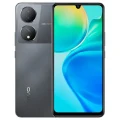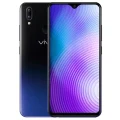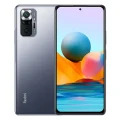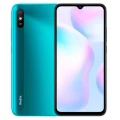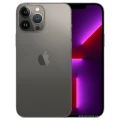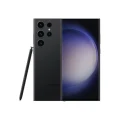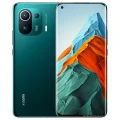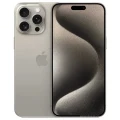Honor X8
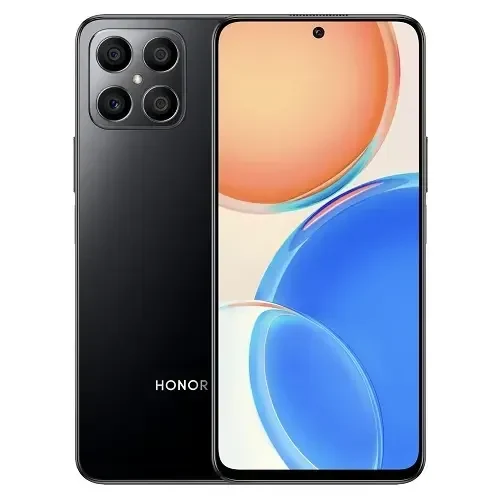


Honor X8 Price in Bangladesh
The Honor X8 is available in a single variant: 128GB storage and 6GB RAM. It is powered by the Qualcomm SM6225 Snapdragon 680 4G (6 nm) chipset and runs on Android 11, delivering smooth performance for everyday tasks.
The device is equipped with a 4000mAh battery and supports 22.5W fast charging, ensuring reliable power and quick recharges.
Price in Bangladesh
The Honor X8 is priced at BDT 26,000.
Specifications
General
| Model | Honor X8 |
| Announced | 11-03-2022 |
| Released | 24-03-2022 |
| Status | Available |
| Official price | 26000 |
| Unofficial price | 6GB 128GB ৳26000 |
Design
| Dimensions | 163.4 x 74.7 x 7.5 mm (6.43 x 2.94 x 0.30 in) |
| Weight | 177 g (6.24 oz) |
| Colors |
Titanium Silver, Midnight Black, Ocean Blue |
Network
| Technology | GSM / HSPA / LTE |
| 2G Network |
GSM 850 / 900 / 1800 / 1900 - SIM 1 & SIM 2 (dual-SIM) |
| 3G Network |
HSDPA 850 / 900 / 1700(AWS) / 1900 / 2100 |
| 4G Network |
LTE (unspecified) |
| GPRS <strong>GPRS</strong> (General Packet Radio Service) is a packet oriented mobile data service on the 2G and 3G cellular communication system's global system for mobile communications (GSM), Generally, GPRS is used for the purpose of wireless data transfer, such as sharing pictures and videos or browsing the Internet via a mobile phone connection. | |
| EDGE <strong>EDGE</strong> (Enhanced Data GSM Environment) is a wireless network technology generally considered the next step in the 2G network offers data transfer rates up to four times faster than ordinary GSM networks, Generally, EDGE is used for the purpose of wireless data transfer, such as sharing pictures and videos or browsing the Internet via a mobile phone connection. | |
| Speed | HSPA 42.2/5.76 Mbps, LTE-A |
Display
| Display Type <strong>Display Technology => </strong> A number of display technologies and types used in mobile phones => TFT (Thin Film Transistor), IPS (In-Place Switching), OLED (Organic Light Emitting Diode), AMOLED (Active-Matrix Organic Light-Emitting Diode), Super AMOLED (an even advanced version of AMOLED), Resistive Touchscreen (Resistive touchscreens contain two layer of conductive material with a very small gap between them which acts as a resistance), Capacitive Touchsceen (Capacitive touchscreen technology consists of a layer of glass coated with a transparent conductor) | IPS LCD capacitive touchscreen, 16M colors |
| Size | 6.7 inches, 108.7 cm2 (~89.1% screen-to-body ratio) |
| Resolution | 1080 x 2388 pixels (~391 ppi density) |
| Features |
90Hz |
Camera
Main camera
| Camera Setup | Quad |
| Primary <strong>Camera</strong> is able to capture photographs and usually videos, The most important characteristics of a camera are the resolution (measured in megapixels), lens focus type (fixed or automatic), higher megapixel cameras are known to capture higher quality photos, but not always a good measurement of the photos quality. |
64 MP, f/1.8, (wide), PDAF 5 MP, f/2.2, (ultrawide) 2 MP, f/2.4, (macro) 2 MP, f/2.4, (depth) |
| Features |
LED flash, panorama, HDR |
| Video | 1080p@30fps |
Selfie camera
| Camera Setup | Single |
| Primary <strong>Camera</strong> is able to capture photographs and usually videos, The most important characteristics of a camera are the resolution (measured in megapixels), lens focus type (fixed or automatic), higher megapixel cameras are known to capture higher quality photos, but not always a good measurement of the photos quality. |
16 MP, f/2.5 |
| Features |
HDR |
Hardware
| Chipset <strong>Chipset</strong> is a group of integrated circuits designed to perform one or a more dedicated functions, often with real time computing constraints, Popular smartphones are equipped with more advanced embedded chipsets that can do many different tasks depending on their programming. | Qualcomm SM6225 Snapdragon 680 4G (6 nm) |
| CPU <strong>CPU</strong> (Central Processing Unit) mostly known as processors, CPU processes instructions in order to carry out certain functions that make your device operate properly. Processors are often described as the brain of computers, smartphones and tablets, Smartphones and tablets rely on processors to carry out their every task, Processors are an incredibly important factor in selecting any type of computing device, including your smartphone. | Octa-core (4x2.4 GHz Kryo 265 Gold & 4x1.9 GHz Kryo 265 Silver) |
| GPU <strong>GPU</strong> (Graphics Processing Unit) is a single-chip processor designed to rapidly manipulate and alter memory to accelerate the creation of images in a frame buffer intended for output to a display, This includes things such as lighting effects, object transformations, and 3D motion. | Adreno 610 |
| RAM (Memory) <strong>RAM</strong> (Random Access Memory) is a type of computer memory that can be accessed randomly, any byte of memory can be accessed without touching the preceding bytes that allows information to be stored and accessed quickly from random locations. RAM is the most common type of memory found in computer systems, smartphones, tablets and other electronic devices. | 6 GB |
| Internal Storage <strong>Internal Storage</strong> is a data storage space (flash memory) mostly used in smartphones, tablets and other electronic devices where operating system, apps, music, photos, videos, files and other user data Is stored. | 128 GB |
| Sensors <strong>Sensors</strong> are electronic components that detects and responds to some type of input from the physical environment. The specific input could be light, heat, motion, moisture, pressure and location, The output is generally a signal that is converted to use in computing systems, a location sensor, such as a GPS receiver is able to detect current location of your electronic device. |
Fingerprint (side-mounted), accelerometer, compass Virtual proximity sensing |
Connectivity
| Bluetooth <strong>Bluetooth</strong> is a wireless communications technology for exchanging data between mobile phones, headsets, computers and other network devices over short distances without wires, Bluetooth technology was primarily designed to support simple wireless networking of personal consumer devices. | 5.1, A2DP, LE |
| Infrared <strong>Infrared</strong> connectivity is an old wireless technology used to connect two electronic devices. It uses a beam of infrared light to transmit information and so requires direct line of sight and operates only at close range. | |
| USB | USB Type-C 2.0, USB On-The-Go |
| GPS <strong>GPS</strong> The Global Positioning System is a satellite-based radio navigation system, GPS permits users to determine their position, velocity and the time 24 hours a day, in all weather, anywhere in the world, In order to locate your position, your device or GPS receiver must have a clear view of the sky. | Yes, with A-GPS, GLONASS, BDS |
| NFC <strong>NFC</strong> (Near field communication) is a set of standards for smartphones and similar devices to establish peer-to-peer radio communications with each other by touching them together or bringing them into proximity, usually no more than a few inches. |
Battery
| Battery Type <strong>Battery Type => </strong> Cell phones run on various kinds of batteries depending on the manufacturer, phone size or shape and features. There are basically four types of cell phone batteries => Lithium Polymer, Lithium Ion, Nickel Metal Hydride and Nickel Cadmium. | Non-Removable Li-Po |
| Capacity <strong>Battery Capacity</strong> is a measure (typically in Amp-hr) of the charge stored by the battery, and is determined by the mass of active material contained in the battery. The battery capacity represents the maximum amount of energy that can be extracted from the battery under certain conditions. | 4000 mAh |
| Charging Charging | Fast charging 22.5W |
Honor X8 Review: A Balanced Mid-Range Smartphone?
The Honor X8 has set its sights on the competitive mid-range smartphone market, aiming to win over users with a sleek design, decent performance, and an attractive price tag. With a price point of around $260 (in Bangladesh), it is positioned as an affordable yet capable smartphone, but does it truly live up to the hype? This in-depth review will cover everything from design to performance, helping you decide whether the Honor X8 is the right device for you.
Design and Build Quality
The first thing you’ll notice about the Honor X8 is its modern and minimalistic design. Honor has crafted a sleek device that’s perfect for users who care about aesthetics.
- Materials Used: The phone features a lightweight plastic build that mimics the look of glass on the back. While it’s not as premium as metal or Gorilla Glass, it still feels solid for a mid-range phone. The edges are flat, giving it a contemporary look reminiscent of higher-end devices.
- Ergonomics: Its slim profile (measuring just 7.45mm thick) makes it easy to hold, even during extended periods. At only 177g, it’s also lightweight, so it won’t weigh you down.
- Color Options: The Honor X8 is available in elegant shades such as Titanium Silver, Midnight Black, and Ocean Blue. Each offers a distinct and polished look that’s bound to attract attention.
Display and Audio
When it comes to visuals and sound, the Honor X8 delivers a respectable experience, though there are a few trade-offs for its price.
- Display Quality: The phone comes with a 6.7-inch LCD display featuring a Full HD+ resolution (2388 x 1080 pixels). The colors are vibrant, and the sharpness is good for its class, although it won’t quite match the depth and saturation of OLED panels. A 90Hz refresh rate makes scrolling and animations feel noticeably smoother.
- Brightness: Outdoor visibility is decent but not ideal in bright sunlight, as the peak brightness could be higher. For indoor use, the screen performs perfectly without straining the eyes.
- Audio Performance: The mono speaker is adequate for casual usage such as watching videos or taking calls. However, audiophiles may find the sound quality lacking depth and richness. Plugging in headphones or pairing Bluetooth devices offers a much better experience.
Performance
Under the hood, the Honor X8 runs on the Qualcomm Snapdragon 680 4G chipset, a reliable performer for daily tasks and light gaming.
- Speed and Responsiveness: With 6GB of RAM paired with the Snapdragon 680 processor, the phone breezes through everyday activities like messaging, social media browsing, and streaming. Apps launch quickly, and multitasking is fluid for the most part.
- Gaming Experience: Casual games like Candy Crush and Subway Surfers run smoothly, but graphics-intensive titles such as PUBG Mobile or Genshin Impact will need to be played on lower settings to avoid lag.
- Software Optimization: Powered by Android 11 with Honor’s Magic UI 4.2 on top, the device runs smoothly. That said, the lack of 5G capabilities might be a dealbreaker for those who expect better future-proofing.
Battery Life
The Honor X8 features a 4000mAh battery, which delivers decent longevity for a mid-range device.
- Usage Duration: On average, the device can last a full day with moderate use, including web browsing, video streaming, and occasional gaming. A heavy user might need to charge it before the end of the day.
- Charging Speed: The phone supports 22.5W fast charging, taking it from 0 to 50% in about 30 minutes, but a full charge takes slightly over an hour. While it’s not the fastest in its range, the quick bursts of charging are convenient.
Camera Quality
Photography enthusiasts will likely appreciate the Honor X8’s camera setup, though it’s more suited for casual photography than professional use.
- Rear Cameras: The device houses a quad-camera system:
- 64MP (main sensor) produces crisp images in good lighting.
- 5MP (ultra-wide) works reasonably well for broader shots but struggles with detail in lower light.
- 2MP (macro) captures close-ups but requires plenty of light for decent results.
- 2MP (depth) contributes to portrait photography, adding a nice blur effect to backgrounds.
- Low-Light Performance: While the main sensor includes some AI enhancements, photos in dim settings tend to lose detail and suffer from noticeable grain.
- Front Camera: The 16MP selfie shooter takes sharp and bright selfies. Portrait mode works well, ensuring your background is blurred for a professional touch.
- Video Recording: The phone supports 1080p video recording at 30fps. Footage is generally stable but isn’t as crisp or smooth as higher-end devices.
User Interface and Features
The Honor X8 runs on Magic UI 4.2, which offers a straightforward, user-friendly experience.
- Customization Options: The UI provides several customization features, allowing users to tweak the home screen, app drawer, and icons according to their preferences.
- Unique Functionalities: Features like App Twin (which allows two accounts for the same app) are handy for users managing personal and work profiles.
- Bloatware: There is some pre-installed software, but most of it can be removed to declutter your device.
Price and Value
Priced at approximately $260, the Honor X8 sits comfortably in the mid-range segment. But how does it stack up against competitors like the Xiaomi Redmi Note 11 and Samsung Galaxy A13?
- Pros: The Honor X8 offers a sleek design, solid everyday performance, and decent cameras, making it a great value for casual users and first-time smartphone buyers.
- Cons: Missing features like OLED displays, more powerful speakers, and 5G connectivity make it feel slightly dated compared to some rivals.
Overall, it’s a well-rounded phone for those who prioritize style and usability without breaking the bank.
Is the Honor X8 Worth It?
The Honor X8 is an excellent choice for users seeking a stylish, reliable smartphone for daily tasks, content consumption, and casual photography. While it lacks top-tier performance features like 5G and OLED screen technology, its affordable price and solid specifications make it a worthwhile option for tech enthusiasts on a budget.
Looking for a dependable and affordable mid-range smartphone? Share your thoughts below or browse our related reviews to find your perfect match.
